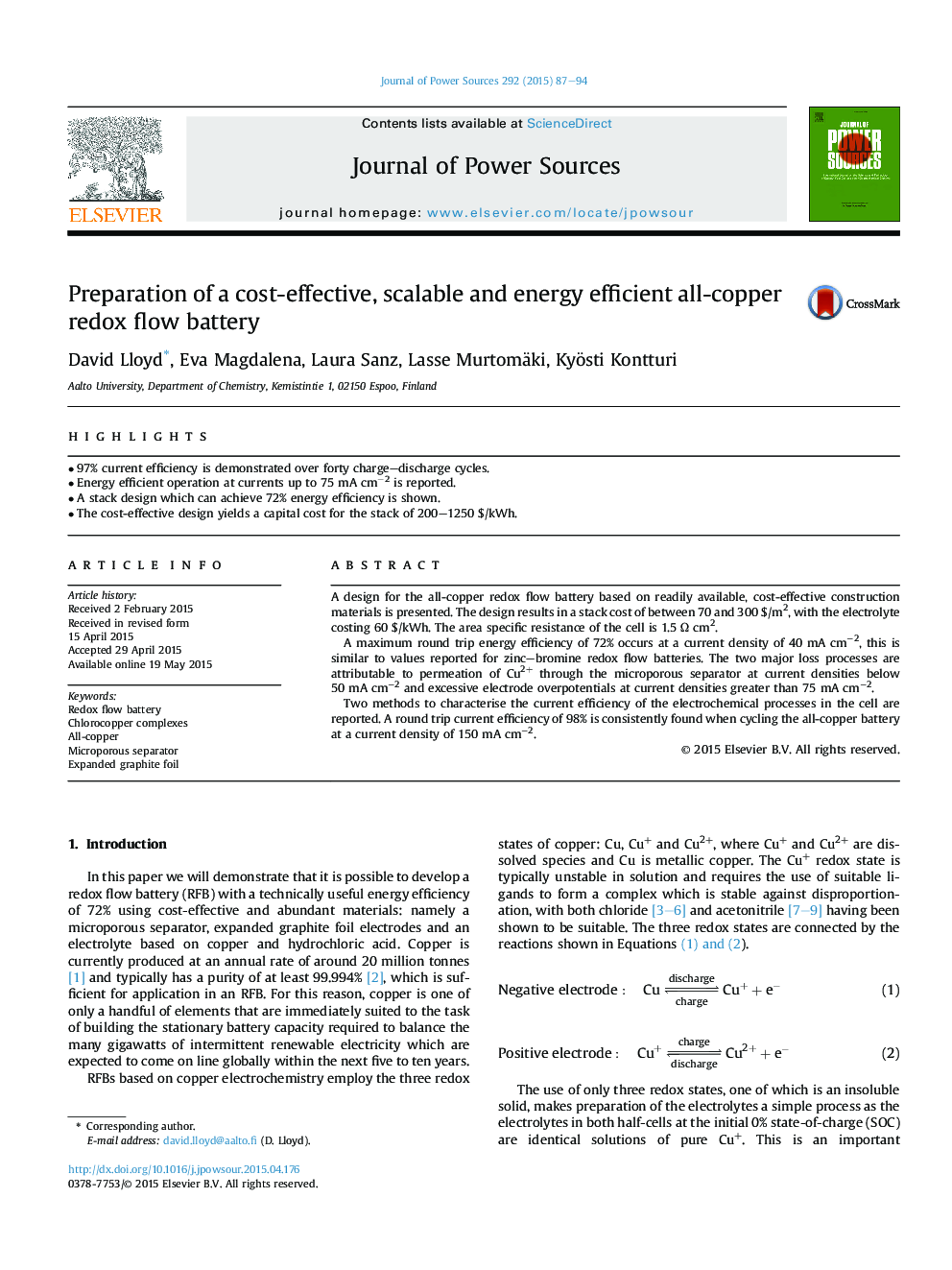| Article ID | Journal | Published Year | Pages | File Type |
|---|---|---|---|---|
| 1283917 | Journal of Power Sources | 2015 | 8 Pages |
•97% current efficiency is demonstrated over forty charge–discharge cycles.•Energy efficient operation at currents up to 75 mA cm−2 is reported.•A stack design which can achieve 72% energy efficiency is shown.•The cost-effective design yields a capital cost for the stack of 200–1250 $/kWh.
A design for the all-copper redox flow battery based on readily available, cost-effective construction materials is presented. The design results in a stack cost of between 70 and 300 $/m2, with the electrolyte costing 60 $/kWh. The area specific resistance of the cell is 1.5 Ω cm2.A maximum round trip energy efficiency of 72% occurs at a current density of 40 mA cm−2, this is similar to values reported for zinc–bromine redox flow batteries. The two major loss processes are attributable to permeation of Cu2+ through the microporous separator at current densities below 50 mA cm−2 and excessive electrode overpotentials at current densities greater than 75 mA cm−2.Two methods to characterise the current efficiency of the electrochemical processes in the cell are reported. A round trip current efficiency of 98% is consistently found when cycling the all-copper battery at a current density of 150 mA cm−2.
